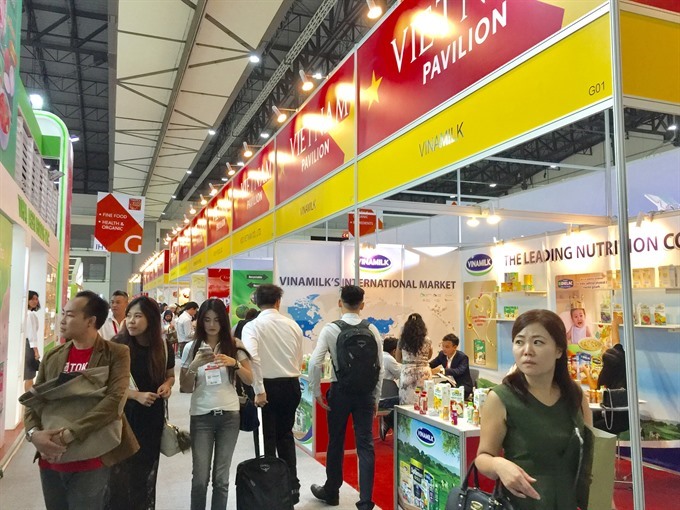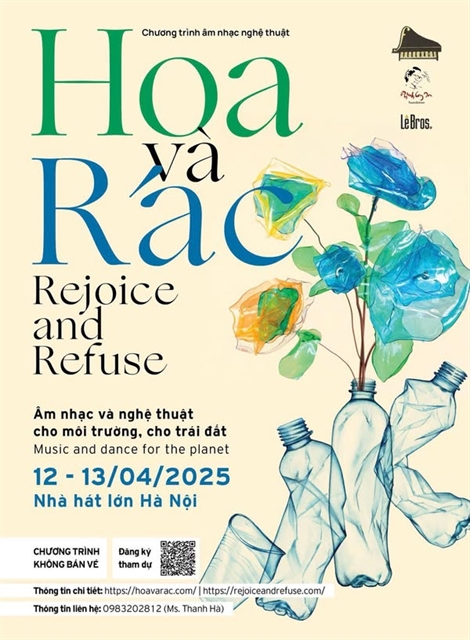 Economy
Economy

With a market of 93 million people, Việt Nam has seen rapidly growing consumer demand for food and beverage (F&B) products, offering great opportunities for the sector to expand, experts have said.
 |
| Nearly 60 Vietnamese F&B firms are expected to participate in the THAIFEX-World of Asia fair in Bangkok this year, an increase of 16 per cent over last year. VNS Photo Bồ Xuân Hiệp |
HCM CITY — With a market of 93 million people, Việt Nam has seen rapidly growing consumer demand for food and beverage (F&B) products, offering great opportunities for the sector to expand, experts have said.
Việt Nam’s annual consumption of food and drink products accounts for about 15 per cent of Gross Domestic Product (GDP), and this rate will rise in the future, according to the Ministry of Industry and Trade.
The country is expected to enter the top three Asian countries posting the highest growth rate of the F&B industry by 2020.
Lý Kim Chi, president of the HCM City Food and Foodstuff Association, said that today’s consumers were willing to pay more for healthy and natural products.
As a country with a strong agricultural sector, Việt Nam is able to provide a wide range of ingredients for the local food and drink industry, while the robust expansion of convenience store chains has been facilitating distribution and consumption, she said.
On Tuesday (May 29), the Vietnamese High Quality Business Association will, for the first time, take part in THAIFEX-World of Food Asia, the leading F&B trade fair in Asia, according to Vũ Kim Hạnh, chairwoman of the association.
Around 60 of the country’s leading F&B companies, an increase of 16 over last year, will be on hand to promote their products at the fair, to be held in Bangkok from May 29-June 2.
Hạnh said that participation in trade shows was one of many ways to promote Vietnamese products.
“However, it takes time and effort for enterprises to get their products known by buyers worldwide,” she said. “If exporters want to expand their markets, they need to take note of food safety standards.”
“Ensuring food safety and hygiene will open up many opportunities in the local market, as well as in strict markets like the US, the EU, and Japan,” she added.
“Given that most countries are strengthening protection barriers, Vietnamese products will have access to huge markets if they meet international standards and regulations.”
However, Vietnamese businesses must continue to learn more about regulations and improve product quality, according to Hạnh.
Mathias Kuepper, managing director of Koelnmesse Pte Ltd, the trade fair organiser, said that “With Việt Nam’s thriving economy and increasing incomes, we think the country has the potential to become one of the largest F&B markets in Southeast Asia.”
The country has adopted policies to develop the F&B sector by improving the business climate for producers, reforming public administration, and offering soft loans and demand stimulus programmes.
PR and marketing campaigns have been launched in recent years to help local producers promote their brands and gain a stronger foothold in the local market, Chi said.
Việt Nam’s food service industry was worth $20.9 million in 2016 and is expected to grow at a compound annual growth rate of 8.4 per cent in the next five years, according to the HCM City Food and Foodstuff Association.
The ASEAN region is expected to grow 5.1 per cent this year and is projected to rank as the fourth largest economic area in the world by 2050. — VNS









